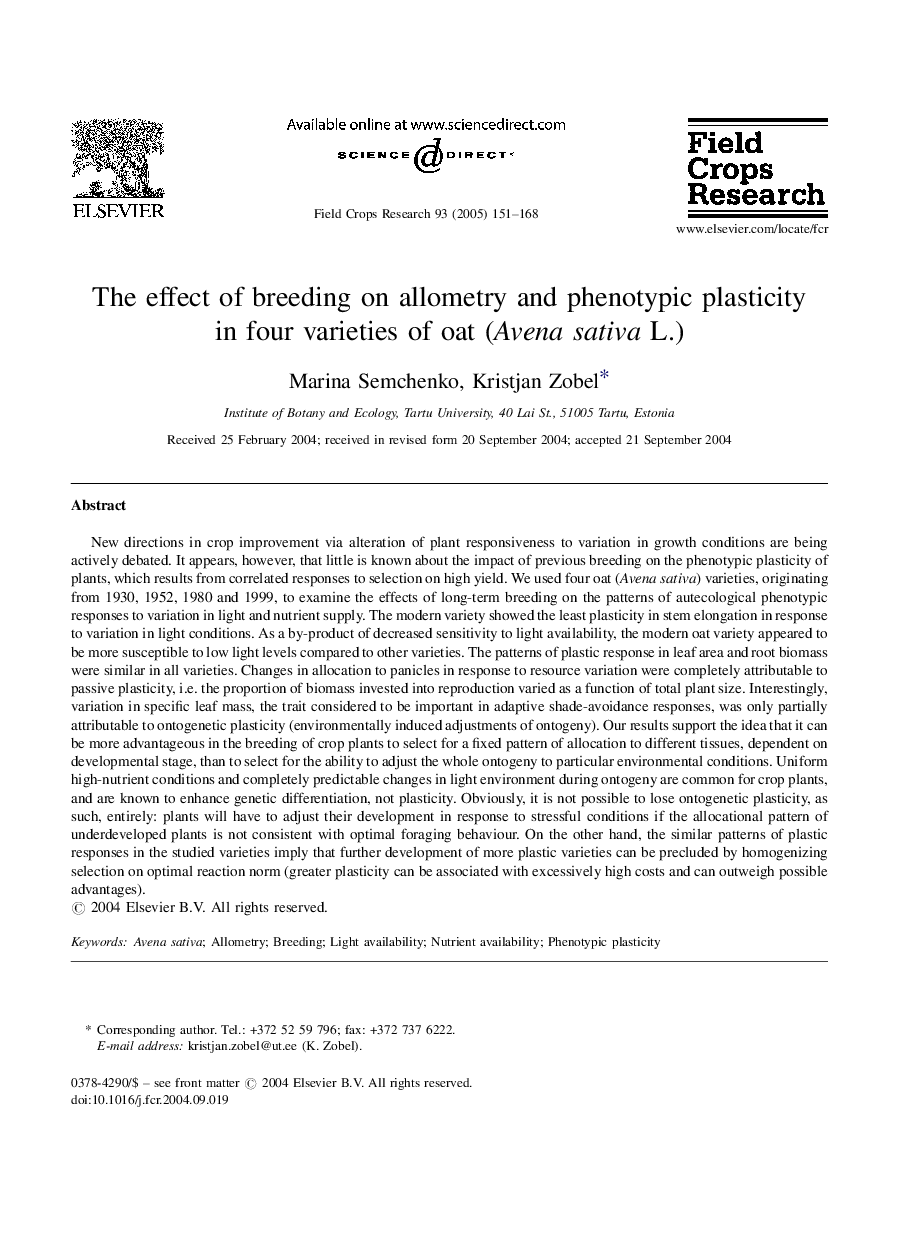| کد مقاله | کد نشریه | سال انتشار | مقاله انگلیسی | نسخه تمام متن |
|---|---|---|---|---|
| 9473478 | 1624756 | 2005 | 18 صفحه PDF | دانلود رایگان |
عنوان انگلیسی مقاله ISI
The effect of breeding on allometry and phenotypic plasticity in four varieties of oat (Avena sativa L.)
دانلود مقاله + سفارش ترجمه
دانلود مقاله ISI انگلیسی
رایگان برای ایرانیان
کلمات کلیدی
موضوعات مرتبط
علوم زیستی و بیوفناوری
علوم کشاورزی و بیولوژیک
علوم زراعت و اصلاح نباتات
پیش نمایش صفحه اول مقاله

چکیده انگلیسی
New directions in crop improvement via alteration of plant responsiveness to variation in growth conditions are being actively debated. It appears, however, that little is known about the impact of previous breeding on the phenotypic plasticity of plants, which results from correlated responses to selection on high yield. We used four oat (Avena sativa) varieties, originating from 1930, 1952, 1980 and 1999, to examine the effects of long-term breeding on the patterns of autecological phenotypic responses to variation in light and nutrient supply. The modern variety showed the least plasticity in stem elongation in response to variation in light conditions. As a by-product of decreased sensitivity to light availability, the modern oat variety appeared to be more susceptible to low light levels compared to other varieties. The patterns of plastic response in leaf area and root biomass were similar in all varieties. Changes in allocation to panicles in response to resource variation were completely attributable to passive plasticity, i.e. the proportion of biomass invested into reproduction varied as a function of total plant size. Interestingly, variation in specific leaf mass, the trait considered to be important in adaptive shade-avoidance responses, was only partially attributable to ontogenetic plasticity (environmentally induced adjustments of ontogeny). Our results support the idea that it can be more advantageous in the breeding of crop plants to select for a fixed pattern of allocation to different tissues, dependent on developmental stage, than to select for the ability to adjust the whole ontogeny to particular environmental conditions. Uniform high-nutrient conditions and completely predictable changes in light environment during ontogeny are common for crop plants, and are known to enhance genetic differentiation, not plasticity. Obviously, it is not possible to lose ontogenetic plasticity, as such, entirely: plants will have to adjust their development in response to stressful conditions if the allocational pattern of underdeveloped plants is not consistent with optimal foraging behaviour. On the other hand, the similar patterns of plastic responses in the studied varieties imply that further development of more plastic varieties can be precluded by homogenizing selection on optimal reaction norm (greater plasticity can be associated with excessively high costs and can outweigh possible advantages).
ناشر
Database: Elsevier - ScienceDirect (ساینس دایرکت)
Journal: Field Crops Research - Volume 93, Issues 2â3, 14 September 2005, Pages 151-168
Journal: Field Crops Research - Volume 93, Issues 2â3, 14 September 2005, Pages 151-168
نویسندگان
Marina Semchenko, Kristjan Zobel,